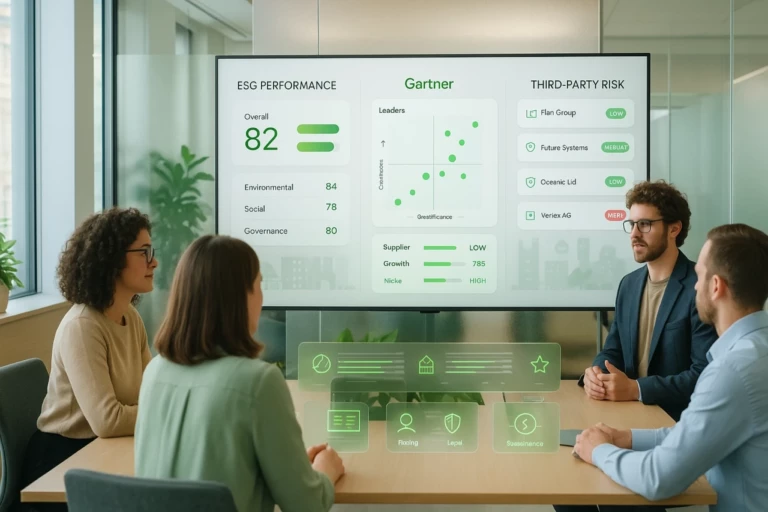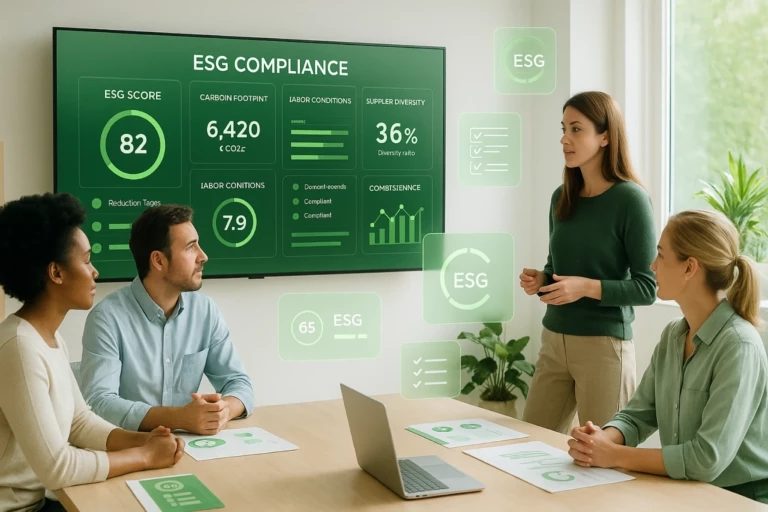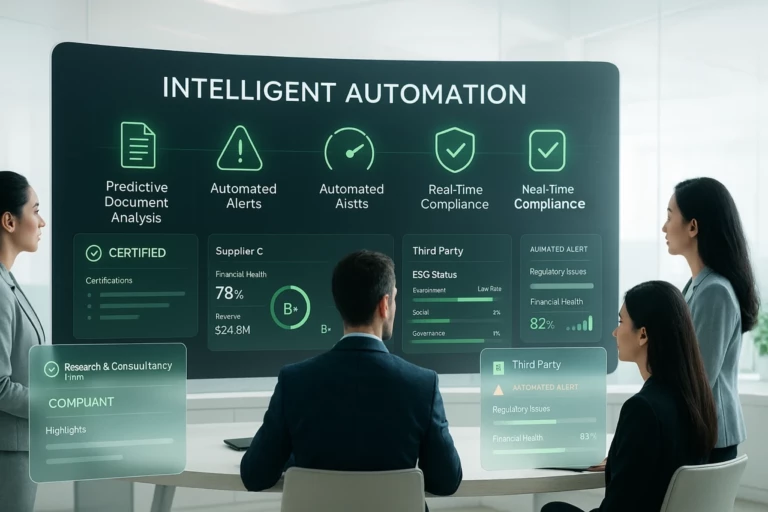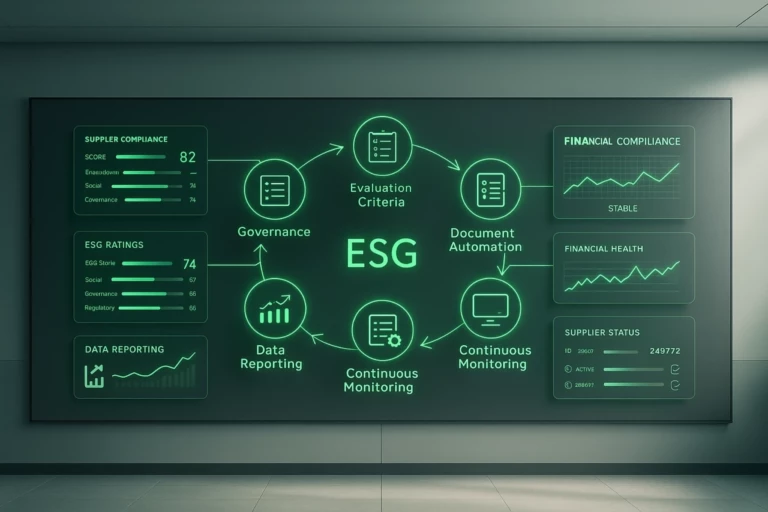Decoding Gartner Evaluation Criteria for European Third-Party Governance Platforms
As third-party governance becomes a cornerstone of operational resilience for organizations, Gartner’s Magic Quadrant evaluation standards stand out as an essential benchmark. However, their application within the European market demands a methodical adaptation to incorporate regulatory compliance with DORA, NIS 2, and CSRD, while ensuring data sovereignty and security. This dual imperative shapes how decision-makers in the […]
Optimizing ESG Evaluation Tools: Enhance Your Supplier Processes
Faced with increasing regulatory pressure and the rise of sustainable transformation, organizations must rethink their third-party governance. Integrating ESG criteria into third-party evaluation tools has become a critical lever to meet regulatory requirements and the growing expectations of stakeholders. Even with the temporary suspension of CS3D, many companies now view supplier ESG commitment as a key risk factor […]
Automated Evaluation Solutions: How to Streamline Without Sacrificing Quality
Automating evaluations is becoming an essential step for organizations looking to strengthen their third-party governance. IT decision-makers, especially in construction, industry, and the public sector, are seeking to combine efficiency and time savings with uncompromising quality assurance. Given concerns around the reliability of automation tools and the need for consistent performance, it’s crucial to debunk myths with recent advances in AI and intelligent […]
The 6 Pillars of an Effective Supplier Evaluation Solution
According to a 2025 Accenture study, 63% of companies are undergoing transformation. As a result, CIOs, procurement managers, and compliance officers are rethinking their approach to third-party governance. In both public and industrial sectors, it is no longer just about collecting administrative documents, but about structuring supplier relationship management to sustainably strengthen operational resilience. Adopting a collaborative evaluation solution based […]
DORA and NIS 2: Optimizing Governance of Critical Third Parties
USD 9.5 trillion: that’s the estimated global loss from cybercrime in 2024, according to the World Economic Forum. If cybercrime were a country, it would be the world’s third-largest economy. In France, losses from cyberattacks are estimated at €100 billion in 2024. These two major regulations—the DORA (Digital Operational Resilience Act) and NIS 2 (Network and Information Security Directive 2)—transform how […]
Deploying a TPRM Platform in Private Companies: Proven Methodology for Effective Third-Party Governance
In a context where TPRM programs require executive-level support to succeed, deploying a TPRM platform is a major strategic challenge. While deployment in the public sector has its own regulatory specificities, multi-site private companies face distinct organizational challenges that call for a tailored methodological approach. This structured methodology transforms third-party evaluation into a true third-party governance lever, going beyond mere documentation compliance to […]
Multi-Entity TPRM Deployment for Large Groups: Strategy and Challenges
In a context where large groups are orchestrating increasingly vast ecosystems of third parties, multi-entity deployment of TPRM has become a major strategic imperative. Société Générale exemplifies this reality with 119,000 employees across 62 countries, highlighting the operational complexity of modern multi-site structures. This exponential complexity calls for third-party governance adapted to the challenges of […]
Environmental Criteria for Third-Party Partner Evaluation
More and more companies are incorporating environmental preservation into their overall strategy. Whether through sustainable practices or compliance with the CSRD (Corporate Sustainability Reporting Directive), these organizations aim to reduce their ecological footprint. The evaluation of suppliers plays a crucial role in this process, using various environmental criteria to ensure a responsible supply chain. What […]
Understanding the Impact of the NIS 2 Directive on the Supply Chain
The modern supply chain forms the backbone of European economies, orchestrating complex flows between partners, suppliers, and subcontractors. With the acceleration of digitalization, this growing interconnection exposes organizations to unprecedented cyber vulnerabilities. The NIS 2 directive, effective since October 2024, is revolutionizing the cybersecurity approach by mandating collaborative evaluation of third-party partners. This regulatory shift […]








